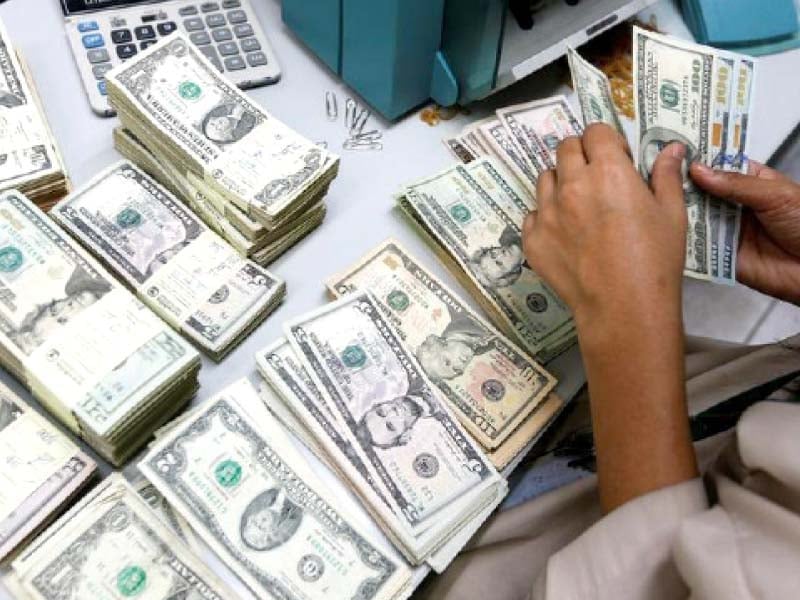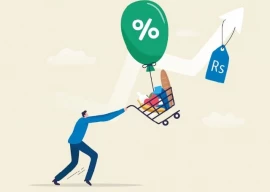
When parliament granted autonomy to the State Bank of Pakistan (SBP) in 2021, the central bank's core mandate shifted from managing GDP growth to controlling inflationyet, in the past three years, the SBP has failed to deliver on that front. Despite manipulating interest rates and deploying other policy tools, inflation has remained stubbornly high, consistently exceeding single-digit levels.
While the SBP has responded to inflation, the anticipated effects on inflation rates from these policies have not materialised. There seems to be a disconnect between the bank's actions and actual inflation outcomes.
With both inflation and interest rates averaging over 15%, the federal government finds itself caught in a double bind. Expensive commercial loans and soaring interest payments have severely limited the government's fiscal space for development projects and subsidies compared to 2015. Simultaneously, the government faces political fallout, as it remains accountable to the public for rising inflation and unemployment.
The private sector, meanwhile, has little incentive to increase capital expenditures (CapEx) when the return on investment (ROI) is lower than the policy rate in most cases. Industries, with a huge stash of cash, have opted to park their funds in high-interest deposits rather than invest in new ventures. By divesting underperforming assets and cutting thousands of jobs, they have significantly improved their cash flow.
In this environment, it is obvious that no matter what industrial policies or investment plans the government proposes, the local private sector will not invest. The three-year experiment with high-interest rates has caused more harm to the federal government than any other entity. Operational costs have soared, and the salary bill has nearly doubled in three years. The government is under immense pressure to cut down departments, privatise state-owned enterprises, and introduce tax reforms to increase fiscal space.
Despite tighter autonomous control, the government continues to seek loans to fund its expenditures. However, this autonomy has stifled all investment and incentive schemes engineered by the finance ministry, all of which began with the SBP's attempt to 'control' inflation through high-interest rates.
As a result, we see that every government since 2021 has struggled to control prices that, in part, were exacerbated by its own autonomous central bank.
In hindsight, both the government and the central bank should have started by reporting supply-side inflation separately and factoring it into Monetary Policy Committee (MPC) meetings when setting interest rates.
A more nuanced approach could involve a multi-pronged strategy, combining monetary and fiscal policies. For instance, the government could boost tax collection on profit-on-debt and treasury bills for large savers (with exceptions for disadvantaged groups) to effectively reduce interest rates on savings. A 50% tax on profits from savings accounts could encourage large savers to invest in other sectors, even with a high policy rate.
The government could then use the additional tax revenue to subsidise loans for large-scale manufacturing, especially for industries with export potential or those that can substitute imports. After setting up new facilities or expanding existing ones, the government could help local industries compete with imported goods, such as those from China under the free trade agreement, by offering performance-based subsidies tied to employment and other metrics like sales growth, production efficiency, and sustainability.
This way, fiscal policy could offset the negative effects of an overly restrictive monetary policy.
If the government wants to drive GDP growth through housing or construction, it must ensure that allied industries have sufficient capacity to meet demand domestically. Otherwise, any housing stimulus could lead to an increase in imports, as seen with the low-interest-rate housing loan scheme that triggered a surge in construction costs and import bills. The result was an artificially overheated economy that failed to combat high-interest rates.
It's clear that Pakistan needs to rethink the role of interest rates in its economic strategy. The SBP's focus on inflation control, while well-intentioned, has come at a high cost. It's time for the executive branch to develop innovative tools to counter the central bank's rigid monetary policies and mitigate supply-side risks to combat inflation more effectively.
THE WRITER IS A CAMBRIDGE GRADUATE AND WORKS AS A STRATEGY CONSULTANT


1731329418-0/BeFunky-collage-(39)1731329418-0-165x106.webp)











1725102927-0/BeFunky-(47)1725102927-0-270x192.webp)






COMMENTS
Comments are moderated and generally will be posted if they are on-topic and not abusive.
For more information, please see our Comments FAQ